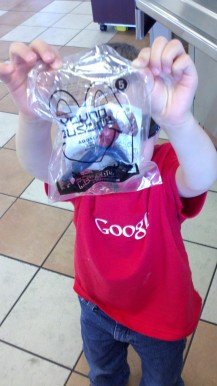Marketing to Children
Lessons from McDonald’s Golden Arches

I’m not a huge fan of the quality of McDonald’s food. However, the golden arches have a tractor beam that pulls me in with a seemingly irresistible force. Part of why I still like McDonald’s is the nostalgia. I now prefer burgers from Fudruckers or Five Guys, but I noticed my son Tyler started recognizing company brands wherever we went.
I’m loyal to Safeway because I work for the company. Therefore, Tyler quickly learned to recognize Safeway and its trucks as we passed them on the highway. I have always loved Starbucks since I was introduced to coffee in college, and Tyler knows that brand because I go there a lot. As I am raising Tyler, what is interesting is what companies are, and are not, doing regarding marketing to children.
The McDonald’s Strategy
I have taken particular interest in McDonald’s marketing strategy because they are masters of marketing to youth. I’m a big fan of ice cream, so on a nice hot day a McDonald’s shake hits the spot. Not to mention the Shamrock Shakes around St. Patrick’s Day, but I digress.
How is your company’s marketing to younger demographics? McDonald’s is a master of marketing to children, their happy meals and “Play Places” are brilliant. Whether you are a retailer, technology company, church, or politician, you can’t forget about youth if you want to compete and stay relevant long term.
A Few Ways You Can Market to Children
- A children’s menu
- A seating area for children
- A play area for children
- Carts for children to push around your store, or ride in
- Gumball machines at the “choke points” in every store, such as the entrance and exits
- Free cookies or candy. Mom and dad have to go into the department to get it. This usually leads to the parents looking for other goodies for themselves, which aren’t free. It is the drug dealer tactic, where, “I’ll give you this one for free, but I know you’ll be back for more.”
- Internships
- Commercials
- DVDs that come with toys
- Candy and toys in the check stands
- Don’t forget about your employees, either. Daycare at your facility while mom or dad are working is one of the best ways to retain talent. Lunch with the kid(s) increases work/life balance, even if it is just for an hour.
What Works For Your Business?
What are some other strategies you’ve seen, and what other ideas do you have?
Build Brand Recognition
Children learn to recognize logos and associate them with experiences
Create Family Experiences
Engage both children and parents in your business environment
Think Long-Term
Today’s children are tomorrow’s adult customers and employees

